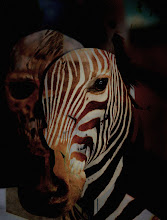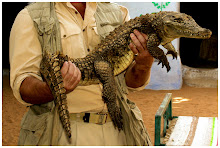Saturday, February 9, 2013
Swiss Adventurer, Traveller, Writer, and Photographer - Ella Maillart...
Wednesday, August 22, 2012
Zerzura the lost Oasis...
Zerzura is a mythical white city or oasis. Myths does impact the spirit of exploration.
In Arabic the word Zerzura is a location populated by starlings. Zerzura was first mentioned in the texts in the 13th century and is said to be located deep in the desert with riches beyond measures. Zerzura has been described in the 15th century by an anonymous Arabic treasure-hunter as a white washed city of the desert on whose gate is a carved bird. It states "take with your hand the key in the beak of the bird, then open the door/gates to the city. Enter, and here you will find great riches..."
He led an expedition to search for Zerzura from 1929-1930 and beleived it would be found in the area of Gilf Kebir. Gilf Kebir would be translated into "The Great Barrier" is a plateau in the New Valley of the remote southwest corner of Egypt and souteast Libya. It has been of great geological interest. Royal Geographic Society has sponsored several expeditions in their search to find Zerzura although without success. Until present day it has not been found.
Time Will Tell
Thursday, September 3, 2009
Danish Arctic Explorer, Adventurer, Writer and Traveler - Peter Freuchen (1886 - 1957).......
 I have experienced the arctic tundra and the arctic during months of winter darkness as well as in the alps in Europe for survival in the cold during my traveling years, but far from living the life of;
I have experienced the arctic tundra and the arctic during months of winter darkness as well as in the alps in Europe for survival in the cold during my traveling years, but far from living the life of; Peter with his wife Dagmar Freuchen-Gale in 1947
Peter with his wife Dagmar Freuchen-Gale in 1947
Monday, August 31, 2009
Henri de Monfried (1879-1974) - Adventurer at Large...
 Henry de Monfried (1879-1974)
Henry de Monfried (1879-1974).

 "Mosquée de Mamoudi...Djibouti "- 1923"
"Mosquée de Mamoudi...Djibouti "- 1923" Kikuyu Village 1942
Kikuyu Village 1942.
 His books are anthropological, colorful and poetical. He managed to write 60 to 70 books during 30 years.
His books are anthropological, colorful and poetical. He managed to write 60 to 70 books during 30 years. 1918 - de Monfried in the center...
1918 - de Monfried in the center...Tuesday, March 31, 2009
Prince Aage of Denmark - An adventurer - Officer of the Foreign Legion.
 .....as I opened a drawer in one of my cabinets to organize some medals for my dinner jacket.. I came upon one of my old badges from French Commando School - which, I attended, - It reminded me about...Prince Aage, who had a fascinating life, colorful and eccentric - born - Christian Alexander Robert Aage, Prince of Denmark, he was a great,great nephew of King Louis Phillipe of France, the King who founded the French Foreign Legion in 1831. After serving in the Danish Army, he finally joined the French Foreign Legion in 1923 and in February of that year arrived in French Morocco where he joined the the Foreign Legion at Meknes with the rank of Captain. He had been fascinated by the Foreign Legion since his childhood. A close family friend use to return on leave to Denmark from the Legion and in the evenings tell dramatic exotic tales of his adventures as an officer. Prince Aage campaigned in the Middle Atlas Region against the Berbers until May 1923 when he was assigned to the staff of General Poeymirau as liaison officer.
.....as I opened a drawer in one of my cabinets to organize some medals for my dinner jacket.. I came upon one of my old badges from French Commando School - which, I attended, - It reminded me about...Prince Aage, who had a fascinating life, colorful and eccentric - born - Christian Alexander Robert Aage, Prince of Denmark, he was a great,great nephew of King Louis Phillipe of France, the King who founded the French Foreign Legion in 1831. After serving in the Danish Army, he finally joined the French Foreign Legion in 1923 and in February of that year arrived in French Morocco where he joined the the Foreign Legion at Meknes with the rank of Captain. He had been fascinated by the Foreign Legion since his childhood. A close family friend use to return on leave to Denmark from the Legion and in the evenings tell dramatic exotic tales of his adventures as an officer. Prince Aage campaigned in the Middle Atlas Region against the Berbers until May 1923 when he was assigned to the staff of General Poeymirau as liaison officer.  Legionnaire
LegionnaireHe was awarded the Croix de Guerre in July 1923. The Foreign Legion is known for their eccentric commanders, in May 1924 he was given command of the mounted infantry company of the 2nd R.E.I. He saw combat action north of the border with Spanish Morocco. Here the Legion fought the Berber Riff leader Abd-el-Krim, who had raised the tribes against the Spanish. In 1924, Prince Aage was appointed to the staff of Marshall Lyautey as Intelligence Officer. In April 1925, Abd-el-Krim invaded French Morocco. Here the Prince participated in combat actions in the mountains. He served with the Legion in Morocco until his death in Taza, Morocco, 1940 and was buried in Sidi Bel Abbés, Algeria after serving with the legion for seventeen years. He had reached the rank of Lieutenant-Colonel.

Wednesday, March 18, 2009
Arabia - R. V. C. Bodley

 It was after having a conversation with T.E. Lawrence, R.V.C. went to live with the Arabs. They were both Officers and friends. R.V.C. had expressed himself and did not know what to do with his future -T.E. had simply said go and live with the Arabs. R.V.C. thought about it and came to live in the Sahara for seven years. It was in 1918 after the war he went to north-west Africa to live. There he learned to speak the language of the nomads, dressed like them and adopted their customs and took their culture to heart. Educated at Eton and at Sandhurst. He had lived in France for nine years, six years in India as an Officer where he explored the Himalayas.........R.V.C. a hunter as well. A man definitely ready for some new life experiences..... Who new the Arabs better than his friend T.E.? This new life, changed R.V.C.s life philosophy forever. A book to read: "Wind in the Sahara by R.V.C. Bodley"
It was after having a conversation with T.E. Lawrence, R.V.C. went to live with the Arabs. They were both Officers and friends. R.V.C. had expressed himself and did not know what to do with his future -T.E. had simply said go and live with the Arabs. R.V.C. thought about it and came to live in the Sahara for seven years. It was in 1918 after the war he went to north-west Africa to live. There he learned to speak the language of the nomads, dressed like them and adopted their customs and took their culture to heart. Educated at Eton and at Sandhurst. He had lived in France for nine years, six years in India as an Officer where he explored the Himalayas.........R.V.C. a hunter as well. A man definitely ready for some new life experiences..... Who new the Arabs better than his friend T.E.? This new life, changed R.V.C.s life philosophy forever. A book to read: "Wind in the Sahara by R.V.C. Bodley"
Tuesday, March 17, 2009
Arabia - Lady Blunt (1837 - 1917) - 15th Baroness Wentworth

 The Garden in Sheyk Obeyd by Artist Ivan Lloyd
The Garden in Sheyk Obeyd by Artist Ivan LloydThursday, March 12, 2009
Matto Grosso, the Brazilian jungles and the disapperance of Colonel Fawcett in 1925
 Explorer (for the Royal Geographic Society), Archaeologist, a strange disappearance of him and his expedition in 1925 has always been of an interest to me. After studying historical and legends about The Lost City/World - he truly belived he had mapped the location of the lost ancient city in the jungles of the Central Brazilian Plateau. As his disapperance has been a mystery and explorers still are looking for an El Dorado the Lost World of Fawcwett keep fascinate us. Fawcett had been sending reports to the Viceroy at Bahia from the Paraguassu River. That was when the last was heard from the expedition.Expeditions in this area had been conducted by the Portuguese in 1743 but it is said that the legend began in 1622. The city had been described in detail. Fawcett was a man of action, he had been exploring Brazilian-Bolivian Frontier 1906 - 1909 and had led before the Brazilian expedition seven expeditions.
Explorer (for the Royal Geographic Society), Archaeologist, a strange disappearance of him and his expedition in 1925 has always been of an interest to me. After studying historical and legends about The Lost City/World - he truly belived he had mapped the location of the lost ancient city in the jungles of the Central Brazilian Plateau. As his disapperance has been a mystery and explorers still are looking for an El Dorado the Lost World of Fawcwett keep fascinate us. Fawcett had been sending reports to the Viceroy at Bahia from the Paraguassu River. That was when the last was heard from the expedition.Expeditions in this area had been conducted by the Portuguese in 1743 but it is said that the legend began in 1622. The city had been described in detail. Fawcett was a man of action, he had been exploring Brazilian-Bolivian Frontier 1906 - 1909 and had led before the Brazilian expedition seven expeditions.Saturday, March 7, 2009
Audwin Pierre McGee - Artist and Adventurer

Wednesday, March 4, 2009
William Ricketts (1898 - 1993) - "Silence will speak"

Have you ever walked through a forest and felt like the trees were whispering? If you walk through William Ricketts enchanted forest maybe it is not so far fetched.



















































































































































































































































.jpg)










.jpg)





















































